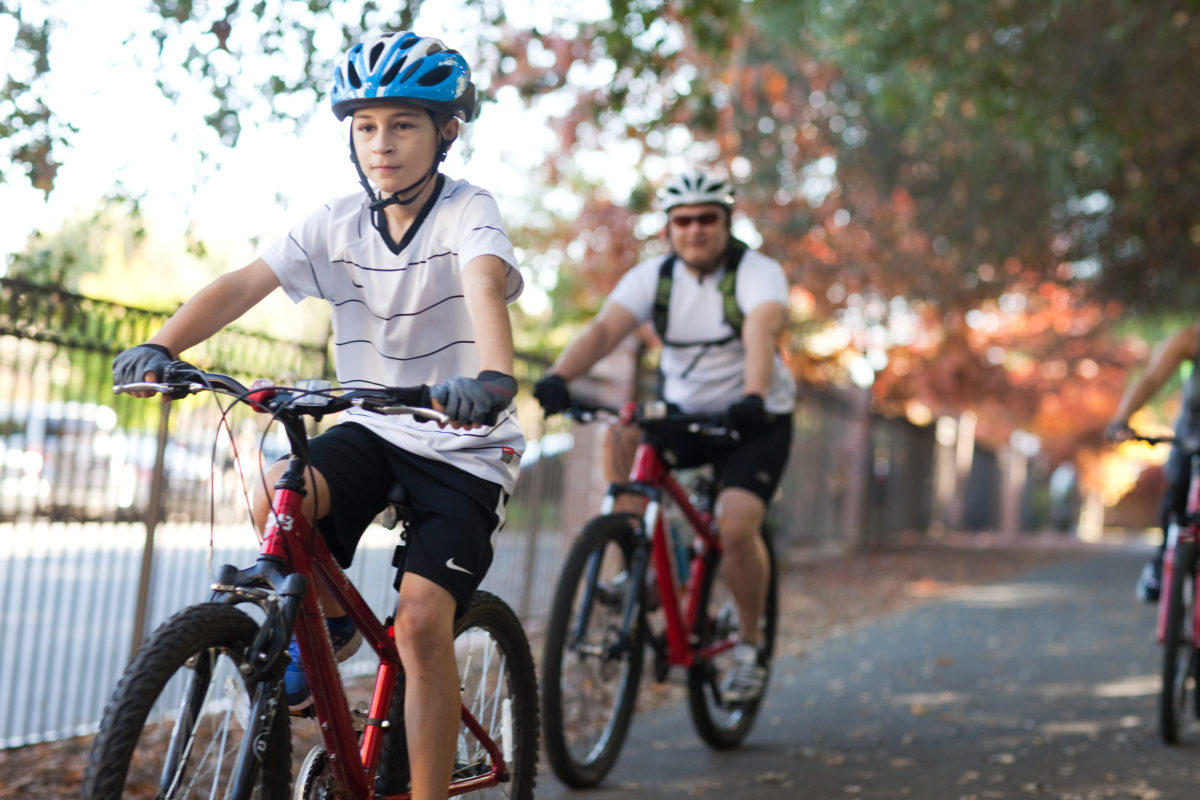Bicycle Safety
The San Ramon Valley is a great place to ride. Our neighborhoods and the accessibility of the Iron Horse Trail and other trails make bicycle riding to work, to school or for recreational purposes fun. Whether you are a child or adult, it is important to know the basic bicycle safety principles before you start your ride.
Top Ten Basic Bicycling Tips
1. Wear a properly fitted helmet
2. Ride with the flow of traffic
3. Slow down and yield (give up your right of way) to pedestrians
4. Stop and look left, right and left again, before crossing
5. Don’t wear headphones or ear buds while riding
6. Wear bright clothing or reflective gear
7. Use hand (directional) signals
8. When riding as a group, ride single file, with one space between each bike
9. Ring your bicycle bell before passing on the left
10. Cross at marked crosswalks and walk your bike across the crosswalk
Wearing Your Helmet – Properly
View printable instructions: Bike Helmet Fitting
Wearing a helmet saves lives and protects the head in the event of a crash or accident. The important thing is to remember to wear it properly; otherwise, it won’t be as effective.
– Be sure your helmet fits well, is adjusted to your head and covers your forehead
– Be sure the chin strap is tight enough to keep your helmet from slipping forward over your face or backward off your forehead. If you wear your helmet too far back, it will not provide enough protection for your forehead.
– You should be able to slip only two fingers under your chin strap
– Always buckle your chin strap!
– Wear a helmet no matter how slow you are riding, or how short of a distance
– Never substitute a hockey or baseball helmet for a cycling helmet- it absorbs crashes differently
– If you have been in a crash or an accident and your helmet has been hit, don’t use it again.
– Choose a light colored helmet, as it can be seen better than a dark one.
– Put your name and phone number inside the helmet in case it gets lost or you get into an accident.
– Set an example by wearing a helmet, and encourage your friends to wear them! It only works when you wear it!
Be Safe and Be Seen!
Wear a reflective vest for added visibility at night. Wear bright colors and use reflectors on your bike, even during daylight hours, which helps you to be visible to other users of the road.
Be Prepared!
You’ve done your helmet check, why not do a check to see if you’re ready for the road. Make sure that nothing will get caught in your bike chain such as loose pant legs or shoelaces. Wear the right shoes- not sandals or cleats. Avoid wearing headphones or ear buds, since the music can distract you from noises such as vehicles, car horns, bicycle bells or other sounds. Bring a water bottle with you and a patch and lever kit in case you get a flat tire. Also, check to see that your bike has a bell. A bike bell can help you warn other cyclists or pedestrians that you are passing them on the left.
Choosing a Bike
Riding a bike that is the right size for you.
– When you are on your bike, stand straddling the top bar of your bike so that both feet are on the ground
– There should be 1 to 3 inches of space between you and the top bar
– Make sure your seat, handlebars and wheels fit tightly
ABC Quick Check
A – Air – Check your tires to make sure they have enough air
B – Brakes – Check your brakes to make sure they are working
C – Chain – Check and lube your bike chain
Where to Ride
There are so many great places to ride in the San Ramon Valley. If you’re a child, check with your parents about where you are allowed to ride, and let them know where you are going. Kids younger than 10 should ride on the sidewalk and not in the street.
On the Road: If you do ride in the street, ride on the right side of the road with traffic and in the bike lane if one is marked.
On the Sidewalk: When riding your bike on the sidewalk, watch for cars pulling out of driveways, as they may not see you.
On the Trail: If you ride on a designated trail (such as the Iron Horse Trail), ride on the right side of the trail. When passing, pass on the left side and use your bicycle bell to warn pedestrians or other cyclists that you are about to pass.
In the Crosswalk: Always walk your bike when using a crosswalk.
